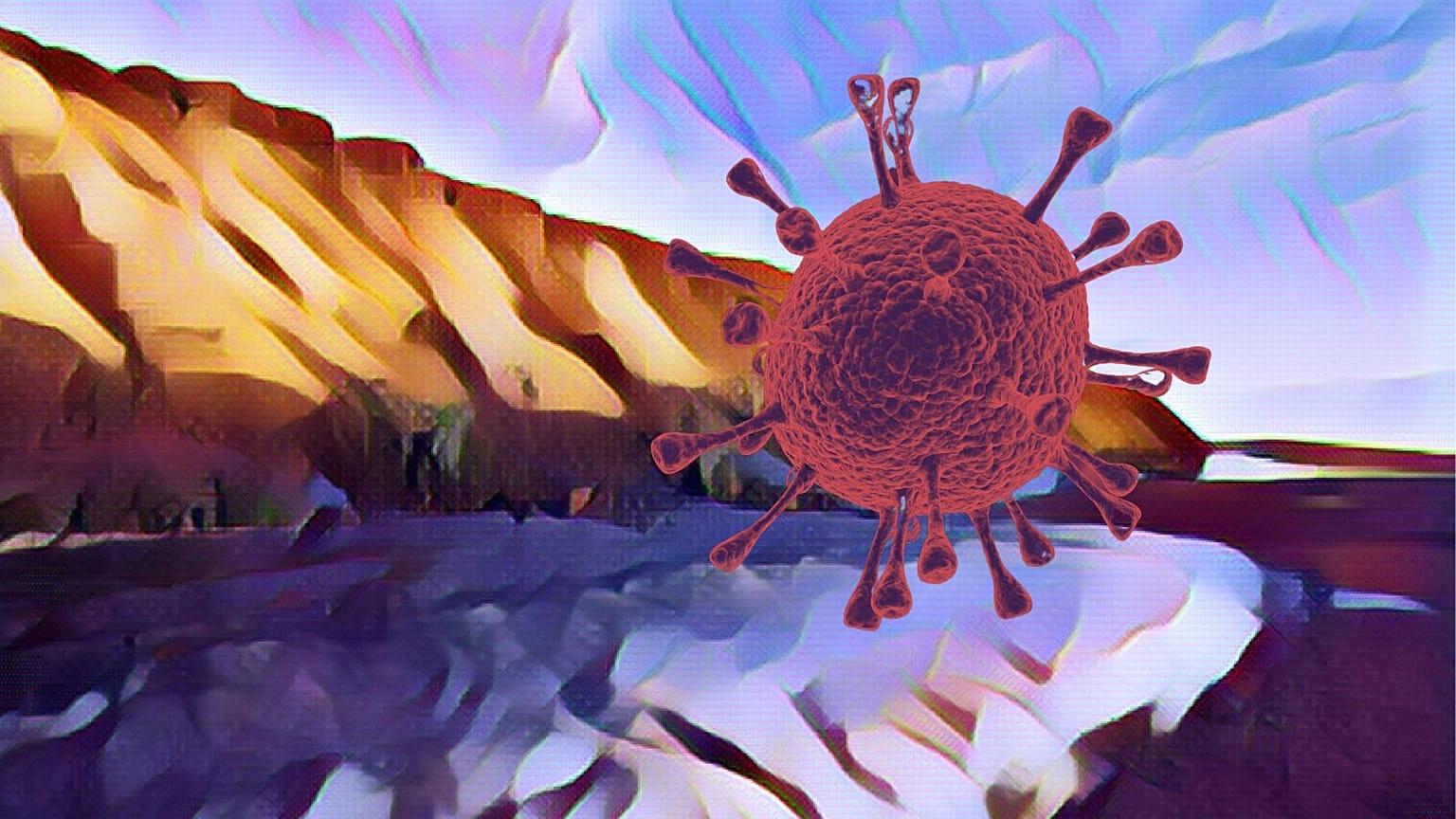Researchers have revived ancient viruses trapped in the Arctic’s permafrost. They warn dangerous ones might resurface because of climate change.
"Zombie" viruses that spent up to 48,500 years frozen in the ground could reawaken as the permafrost melts due to climate change, scientists warn.
Noticeably warmer temperatures in the Arctic are already thawing the region’s permafrost, the permanently frozen layer below Earth’s surface.
Researchers are now trying to assess how big a risk the bacteria and viruses trapped inside might pose for humans - and they’re carefully reviving some of them in the process.
"Fortunately, we can reasonably hope that an epidemic caused by a revived prehistoric pathogenic bacterium could be quickly controlled by the modern antibiotics at our disposal [...] even though bacteria carrying antibiotic-resistance genes appear to be surprisingly prevalent in permafrost," authors of a study published in February in the journal Viruses wrote.
It warned "the situation would be much more disastrous in the case of plant, animal, or human diseases caused by the revival of an ancient unknown virus" for which there would be no specific treatment or vaccine immediately available.
The thawing of the permafrost in Siberia has already been linked to anthrax outbreaks in reindeer, as exceptionally hot summers there caused ancient anthrax spores to resurface from animal burial grounds.
In this latest study, French researcher Jean-Michel Claverie and his team reported they had managed to isolate and revive several ancient viruses from the permafrost, including a giant virus strain (Pithovirus) found in a 27,000-year-old permafrost sample containing a lot of mammoth wool.
Most of the virus isolates were of the Pandoraviridae family, a family of double-stranded DNA viruses that infect amoebae - very small, simple organisms made of only one cell.
Unknown viruses yet to be discovered
"This study confirms the capacity of large DNA viruses infecting Acanthamoeba to remain infectious after more than 48,500 years spent in deep permafrost," the authors wrote.
For safety, Claverie and his team have been focusing on reviving prehistoric viruses that target single-celled amoebae, rather than animals or humans.
Other scientists in Russia are currently hunting for "paleoviruses" directly from permafrost-preserved remains of mammoths, woolly rhinoceros, or prehistoric horses.
"Without the need to embark on such a risky project, we believe our results with Acanthamoeba-infecting viruses can be extrapolated to many other DNA viruses capable of infecting humans or animals," Claverie and his team wrote.
They warned it’s likely that yet unknown viruses will be released as the permafrost thaws.
"How long these viruses could remain infectious once exposed to outdoor conditions (UV light, oxygen, heat), and how likely they will be to encounter and infect a suitable host in the interval, is yet impossible to estimate," they said.
"But the risk is bound to increase in the context of global warming, in which permafrost thawing will keep accelerating, and more people will populate the Arctic in the wake of industrial ventures".


















